Nothing says comfort like a piping hot pot of matzo ball soup. I’ve spent years perfecting this classic chicken soup recipe with matzo balls. Consequently, it has become a family favorite with readers around the world. It’s a staple dish for the Jewish holiday of Passover. I am excited to share it with you! I’ve also included links to three tried-and-true matzo ball recipes – floaters, sinkers, and gluten free.
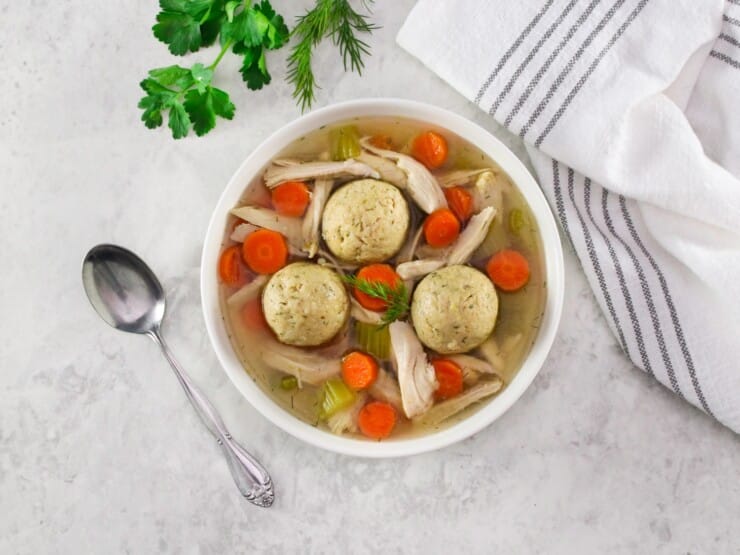
This is the way I make matzo ball soup for my family. It starts with my favorite homemade chicken soup… also known as Jewish Penicillin, the soup that can cure anything. My recipe produces a rich, flavorful broth that is just right for serving with matzo balls (or egg noodles, or rice, or veggies). I make this throughout fall and winter; it’s truly nourishing and satisfying.
Chicken soup for matzo balls
Everybody has their own way of making matzo ball soup. It’s a simple concept and recipes abound, along with opinions on which way is the best way. I don’t pretend that one is better than another. This way just happens to be my family’s favorite. Feel free to dress up the chicken stock the way you like it– add a parsnip for sweetness, thyme for a rustic flavor, or garlic for depth. Use your imagination, or your bubbe’s favorite ingredients. Play around until the flavor is right for you!
On its own, chicken soup is gluten free and very healthy– a great source of protein, with healing qualities. It helps to clear your sinuses and warm you from the inside. From this basic soup recipe, a starch of your choice can be added– matzo balls for matzo ball soup, of course. But you can also add rice, egg noodles, kreplach, or vegetables like squash, zucchini, and potatoes.
How do you make matzo balls?
During Passover, matzo balls are the traditional and kosher starch of choice for the holiday. Some like their matzo balls light as a feather (floaters), whiles others prefer the more chewy, dense version (sinkers). Both are varieties are delicious in their own way. Likewise, there are always opinions on which herbs and spices to add to the mix, and which fat to use for binding the matzo.
My method for making matzo balls is pretty simple. Once upon a time I used Manischewitz mix, which I still think is a great option. But I’ve learned over the years that it’s just as easy– and cheaper– to make your own from scratch. Making your own mix allows you more control over the flavor and texture of the matzo balls. I use a few spices, fresh dill, and melted schmaltz to bind the batter (you can use avocado or safflower oil if you prefer).
To check out my various matzo ball recipes, click the links below. In our family, we prefer floater matzo balls. I’ve also included my gluten free matzo ball recipe for those who can’t stomach the matzo; it’s potato based, and really delicious.
I typically cook my matzo balls in homemade chicken stock for the best flavor. You can also use boxed chicken broth, water flavored with bouillon, or simply salted water. I do prefer using something with more flavor than water.
Of course, if you’re not a matzo ball fan, feel free to make this chicken soup into something completely original by adding your own favorite ingredients. The possibilities are endless!
Recommended Products:
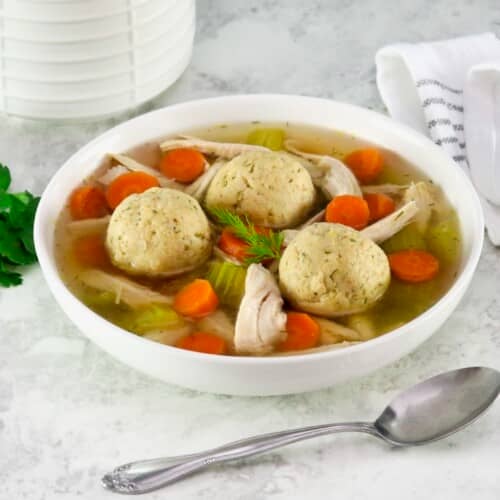
Matzo Ball Soup
Ingredients
Chicken Soup Ingredients
- 4 pounds whole chicken (use a whole chicken, or a mixture of white and dark meat chicken pieces – must be bone in, skin on)
- 2 pounds celery stalks, cleaned
- 1 pound carrots, peeled
- 1 yellow onion, skin on, rinsed clean
- 2 ounces fresh parsley (one large handful), rinsed clean
- 1.5 ounces fresh dill (one handful), rinsed clean
- 2 teaspoons black peppercorns
- 3 whole cloves (optional- do not add unless you like the flavor of cloves)
- 2 bay leaves
- 1 tablespoon sea salt or more to taste
- 1/8 teaspoon saffron threads (optional– adds a rich yellow color and depth of flavor to the broth; only use high quality expensive saffron, the other kind has no flavor)
Matzo Ball Recipes (choose one)
- 1 batch Floater Matzo Balls
- 1 batch Sinker Matzo Balls
- 1 batch Gluten Free Matzo Balls
NOTES
Instructions
To Make Chicken Soup
- I've created very specific instructions here, but once you've made this soup a time or two, you'll see that this whole process is very flexible. Making chicken soup "your own" is part of the fun, so use whatever process and ingredients work best for you!I typically add celery and onion as the main vegetables when cooking my soup stock, though you can add carrots too. I prefer adding carrots at the end of cooking, to avoid the stock becoming overly sweet – we prefer a more savory broth. I highly recommend putting in fresh vegetables after the chicken stock is cooked; they'll be much more flavorful that way (otherwise they tend to be mushy and boring). For the first pound of celery, cut it into large 1-inch chunks (you can include any celery leaves as well).

- The rest of the celery and the carrots (which will end up in the finished soup that is served) should be sliced no thicker than 1/2 inch, with larger stalks and carrots halved lengthwise before cutting into chunks. The uniform size will ensure the pieces cook quickly and evenly. Reserve. (By the way, these veggies are optional – some people like their chicken soup without any vegetables.)

- If using saffron, crush the saffron threads in a mortar and pestle until pulverized to powder. Note: saffron adds a depth of flavor and a deep golden color to the broth, but true saffron (the only kind with flavor) is very pricey. It's got a very nice, but distinctive, essence, so don't add it unless you know you'll enjoy it. The soup will be delicious with or without it.

- Remove the root end of the onion, then slice the whole onion into two halves. Leave the skin on, but make sure it is rinsed clean.

- If using a whole chicken, make sure any gizzards that might be hidden inside are removed (they'll make the stock murky and cloudy). Place the chicken into a 10 quart or larger stock pot. Cover with 5 quarts (20 cups) of water.

- Bring water to a boil over medium high heat, then reduce to an even simmer. Let the chicken simmer for 10-15 minutes, skimming the foam and particles that rise to the surface of the water periodically, until most of the foam is gone.

- Replenish the liquid that was removed during scumming with hot water (it's usually around 1-2 cups).

- Do a final skimming to remove any leftover foam. Add the first pound of celery (the larger pieces), onion, parsley (unchopped), 2/3 of the dill (unchopped), peppercorns, cloves, and bay leaves to the pot. Add 1 tablespoon of sea salt to the water (if you're salt sensitive or using a kosher salted bird, you may wish to salt less). Bring back to a simmer. From this point on, it's important not to let the soup come to a rolling boil. A slow and even simmer is best – if the soup boils quickly, the broth may become cloudy.

- If you are adding the saffron, add it to the pot now. Spoon a little of the hot water from the pot into the mortar, stir, then pour it out to make sure you get every bit of saffron into the pot.

- Put the lid on the pot and vent it. Reduce heat to medium low so the soup is slowly simmering. Let the soup cook for roughly 90 minutes.

- Test for doneness by pulling the leg from the chicken. It should easily separate, showing that the chicken has become quite tender. If not using a whole chicken, stick a fork into one of the dark meat pieces to see if it flakes tenderly. When chicken is ready, turn off the heat. Use a pair of tongs to carefully pull the chicken from the broth (it may fall apart into pieces as you pull it out – that's a good sign!). Put it on a plate or in a bowl.

- Allow the chicken and the broth to cool down for 20-30 minutes, until the pot handles are cool enough to touch and lift. Carefully strain the broth into another pot or large bowl (6 quart) through a mesh strainer. Discard the celery and onion (which will be very mushy and flavorless at this point), spices, herbs, and onion halves. If you used a bowl here, clean the pot and add the strained stock back to the pot again – it will need to cook a little longer.

- Note: When the soup is completely cool, you can skim the fat from the top of the broth if you want to– it will come off in a gel-like layer (this is the "schmaltz"). I actually don't like to skim the fat; those droplets on the surface make the broth silky and give it flavor.

- Pull the meat from the chicken bones into bite-sized pieces.

- Now is the time to add the reserved fresh sliced veggies to the pot (1 pound celery, 1 pound carrots). Bring the broth to a simmer – not a boil – and let the vegetables cook for 20-30 minutes until tender. (If you're not adding additional veggies, just skip ahead to the next step).

- Remove stems from the remaining fresh dill and chop it up.

- Stir the cooked chicken pieces and the dill into the soup with the vegetables, and simmer for a couple of minutes more. Taste the chicken broth and season with additional salt, if desired.

To Make Matzo Balls
- This recipe is for the chicken soup that is served with matzo balls. You'll want to make the matzo balls separately, then serve this soup together with the matzo balls. I recommend one of these three recipes for the matzo balls – floaters, sinkers, or gluten free. Follow the links for each specific process.

- I generally cook my matzo balls in homemade chicken stock in a separate pot. Technically you can cook matzo balls (or kreplach or noodles or whatever) directly in the soup broth, but it will soak up a lot of the yummy stock, leaving you with very little broth for serving. If you prefer to cook your starch of choice directly in the soup, do so before you add the reserved vegetables and chicken pieces – just know you'll be left with very little broth for serving.

- Serve individual portions of soup ladled over the matzo balls. I usually add about 1.5 cups of soup per bowl, and 2 matzo balls per serving (depending on the size of the matzo balls).

Nutrition

tried this recipe?
Let us know in the comments!
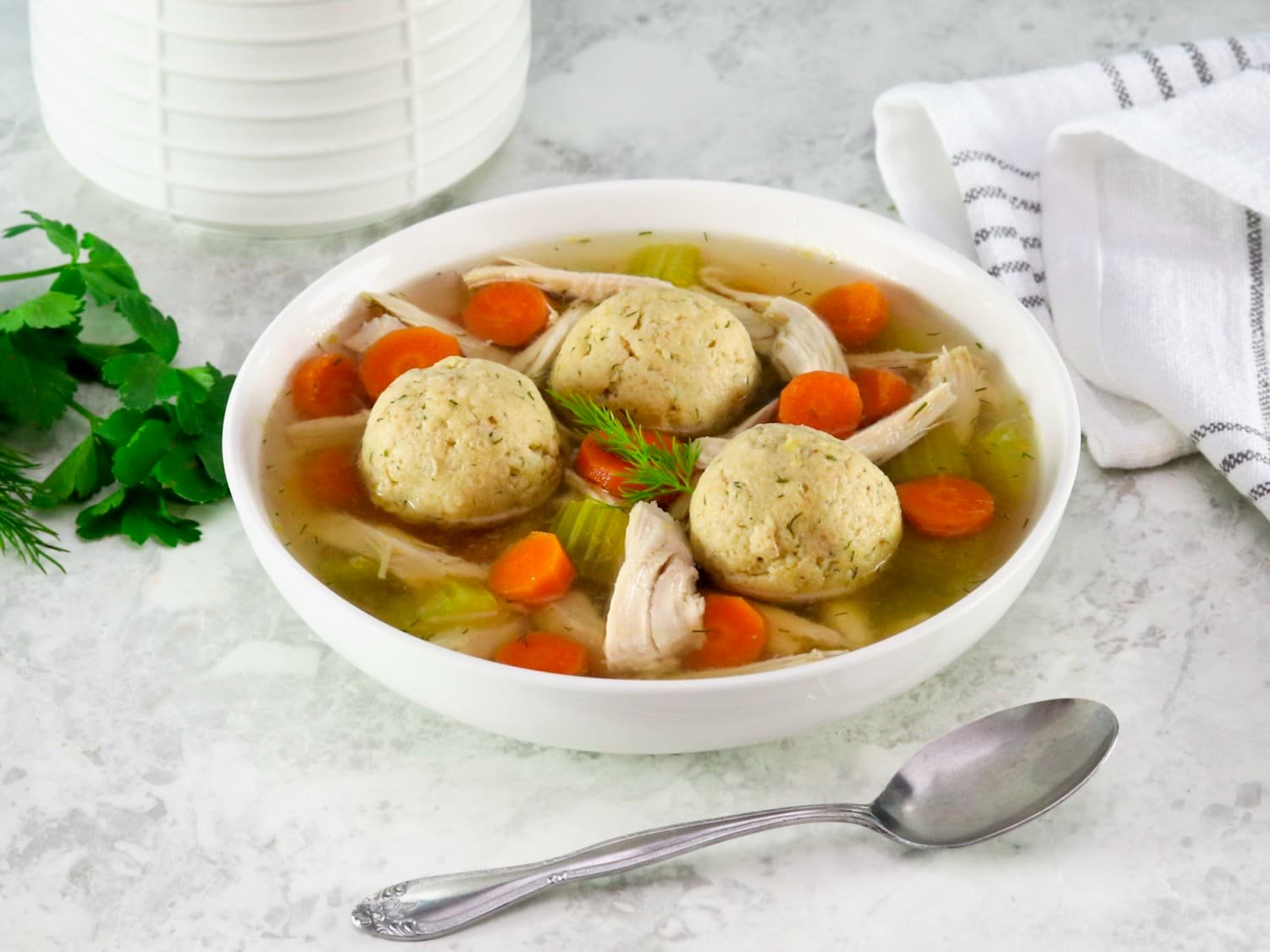
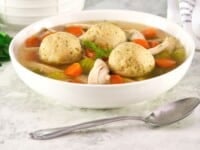


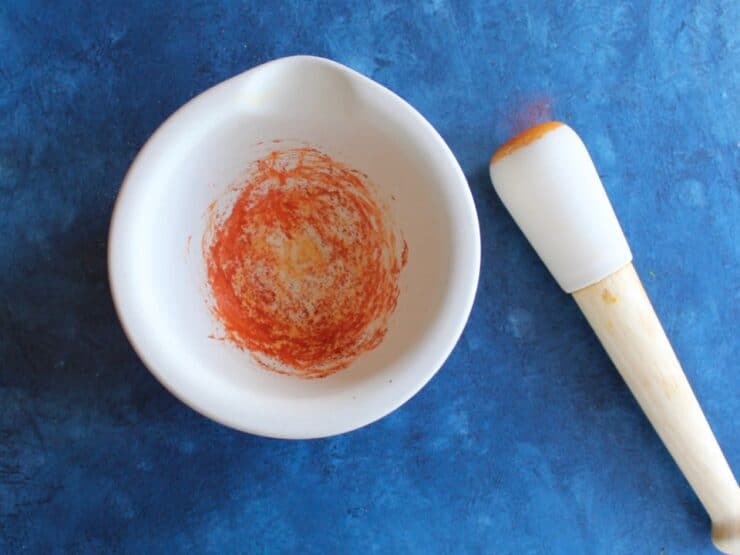
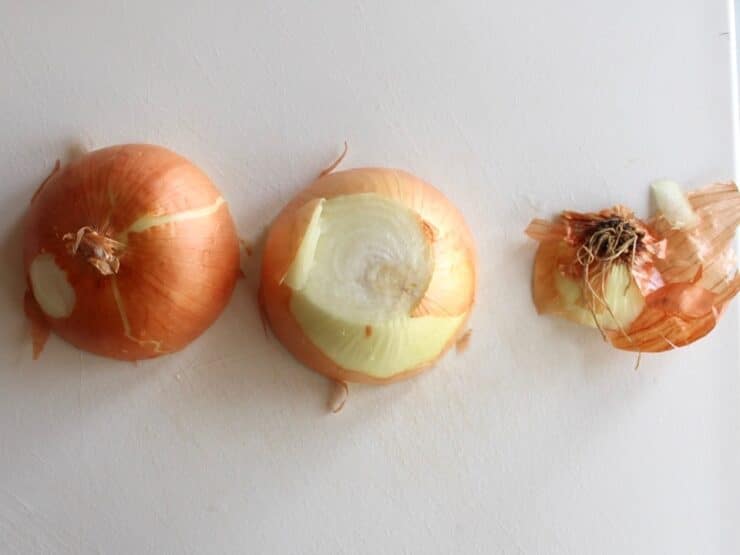
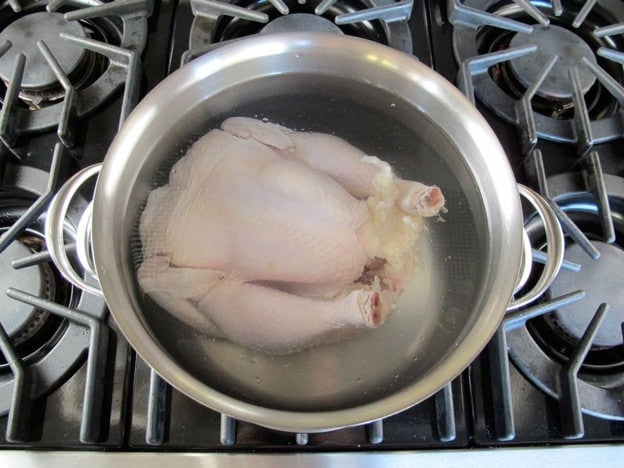

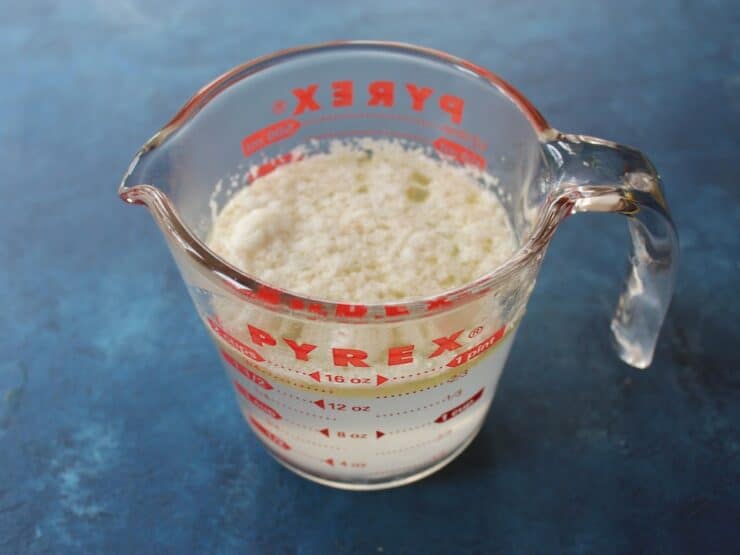

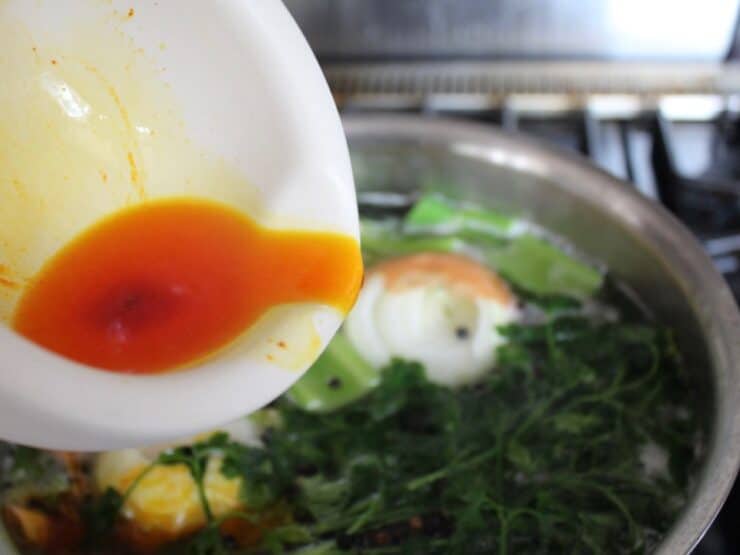
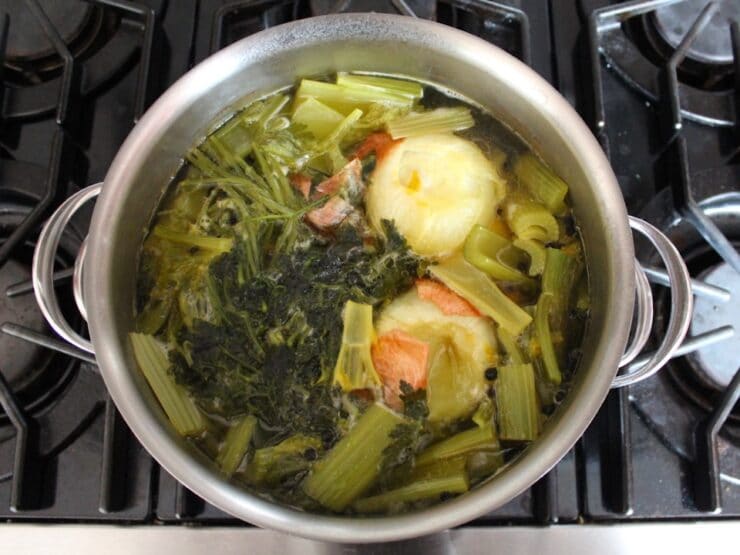
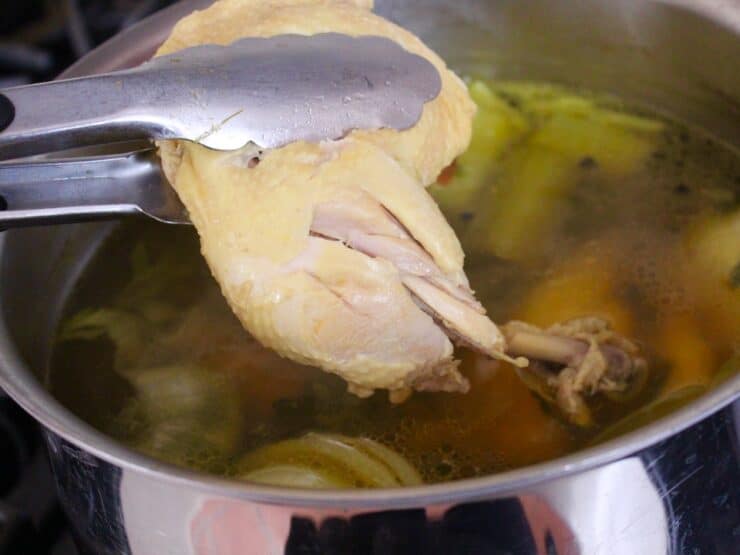
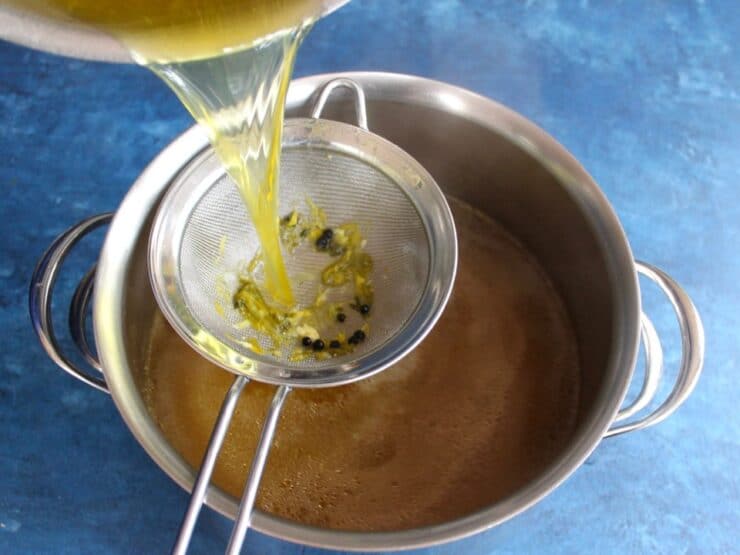
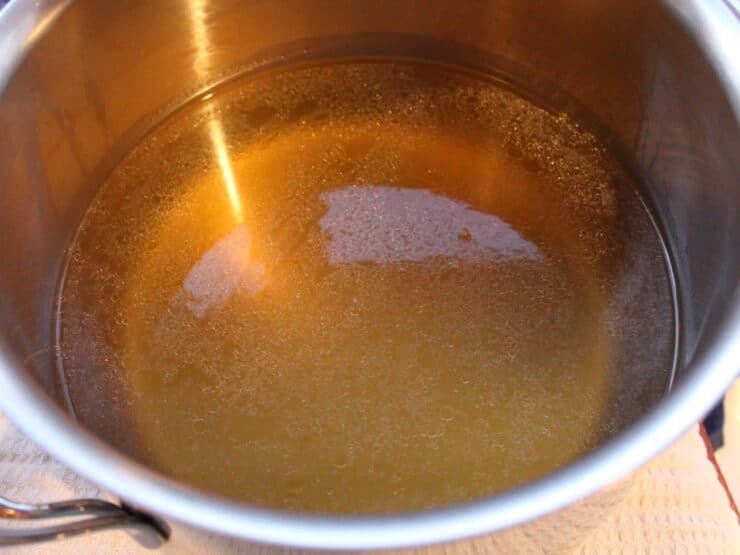
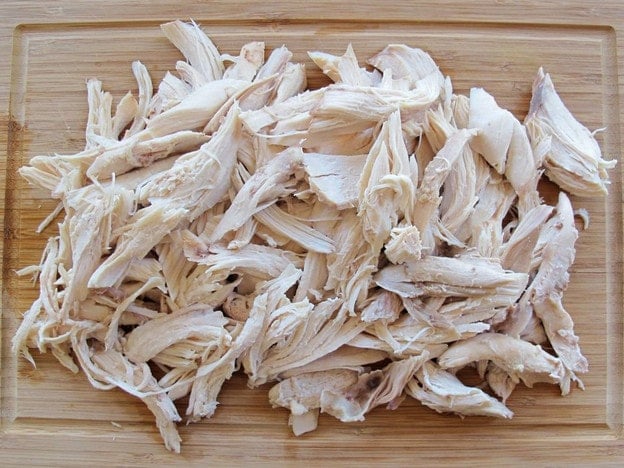



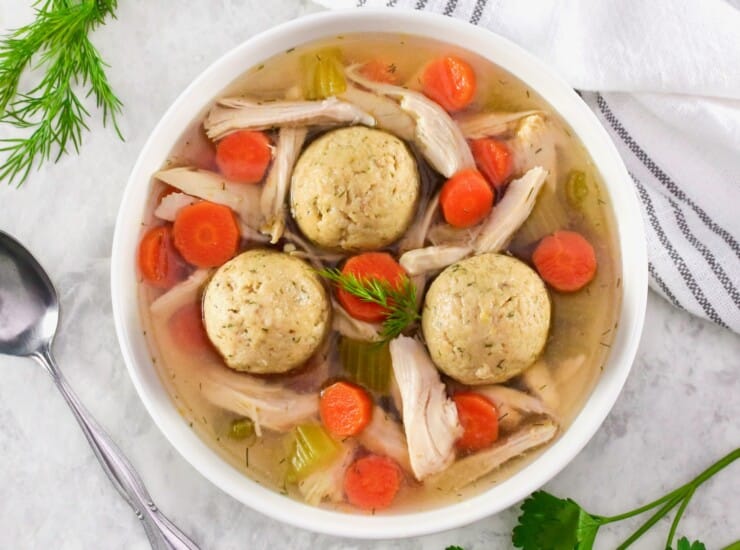
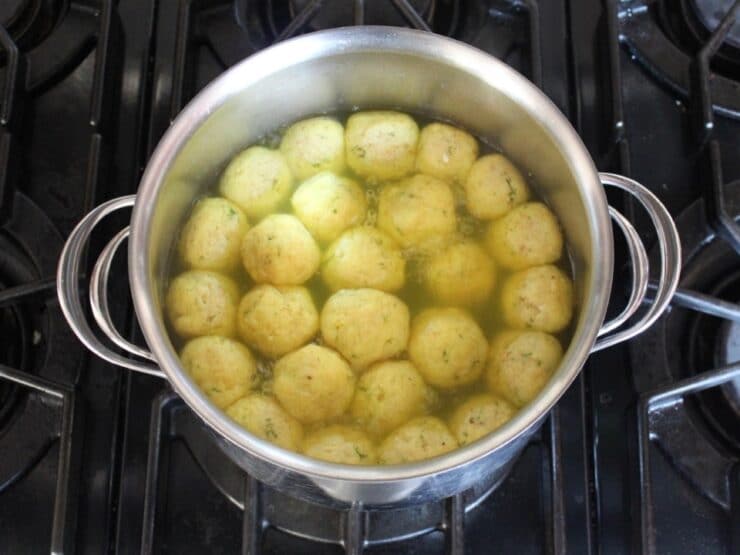



This soup was wonderful. It tasted just like my grandmother’s soup. I did add parsnip as she always did. I was curious about how many cloves you add? I put in 5, and couldn’t really discern a clove taste. Thank you!
This is a wonderful chicken soup recipe. Everyone gives me compliments when I make it.
Tori, your Chicken Soup recipe and “Sinker Matzo Balls with Dill” were absolutely delicious and made our Passover. During these very concerning times and our sheltering in, this soup provided great comfort. It really is 5 star delicious, thank you for this wonderful recipe!
Hi. I’ve made this soup a couple of times now and everyone loved it!!! Thank you so much! The only thing i wanted to know was how much noodles if I don’t want to use matzo balls. I wouldn’t want it to be overloaded with noodles or too little. Thanks again!
Make noodles on the side/separate. As the matzo balls soak up the liquid so will the noodles a lot. Add in amount wanted per bowl before serving. Just depends on how much you really like noodles. I use thin egg noodles ( not for Passover) stored cold separate from soup. Enjoy.
This was delicious! Thank you for another great recipe.
Hi! I’ve made your soup before and its delish so going to make extra to freeze this time. I read the post on freezing and says its ok to freeze the soup and to separate the matzo balls and freeze those separately (probably so they don’t absorb all the broth), but would you freeze the deboned chicken separately too or freeze the chicken with the broth and vegetables?
Also, do you think you could make instant pot bone broth off the carcass of deboned chicken or you think by boiling the whole chicken to make the chicken broth we have already gotten most of its use out? Thanks in advance!
When I freeze it I usually freeze the chicken pieces in the broth. By simmering the chicken for a long time you are basically making bone broth, so I doubt there will be enough left in it for more stock… the only way to know for sure is to try, but my guess is you would end up with very weak stock.
I cooled the chicken broth (for Matzo Ball Soup I plan to make the next day) for a little over two hours, I think, by letting it sit on the counter after straining. Is that safe to do??? I didn’t want to put the pot of broth straight into the fridge piping hot.
The general advice is no longer to let things cool before putting in the refrigerator, as modern refrigerators can handle hotter foods. I think 2 hours is the maximum that most foods are allowed to be left out for food safety purposes… it might be fine, but I can’t promise it is. I don’t want to steer you wrong here, as food poisoning is no joke!
Official food safety advice (last time I checked) is that hot foods must be brought to room temp within 2 hours, and then brought to fridge temp (below 40 degrees) within two more hours. So that is 4 hours in total for the soup to get to fridge temp. I would say 2 hours out of the fridge is fine if the liquid las reached room temp, then put it in the fridge. You can put it in the fridge still warm as Tori says, but it should be safe to do what you did, as long as the time from room temp to fridge temp is no more than 2 hours. The two hours max out of the fridge rule is for ambient (room temp) foods (i.e. not hot foods). I hope this helps!
Would you and how would you recommend freezing the broth? I trying to prep ahead a lot more for family dinners (matzoh ball soup is a favorite) and holidays.
Yes you can freeze broth. Here is a guide for freezing: https://toriavey.com/toris-kitchen/freezing-foods-guide/
Thank you for your chicken soup with “floater” matzo balls recipes. I followed your instructions (almost) exactly and everything was delicious.
I did cook the matzo balls in water but also added a few chicken broth cubes to add that extra flavor.
Loved it all.
Thank you…Ted
Always a hit with my family. My mother says it better than hers and she’s been making chicken soup for almost 80 years!!!
Tori-
I adore your writing style and your recipes bring back so many wonderful memories! During college, I worked at a fairly well-known Kosher restaurant on the east coast US. Absolutely every item was made fresh daily (tongue, brisket, whitefish, matzo, kugel, signature borscht) with a completely separate, full-sized Kosher kitchen. The siblings that inherited from their parents were elderly when I worked for them. I was never able to recreate this taste until now! It’s that subtle magic of extra cloves melded with a HUGE handful of dill!
I went looking for recipes when my husband was convalescing from a nasty bout of flu. I am not Jewish
(although I find much of great interest in Judaism, and have read quite a lot ), and somewhere in my brain I remembered hearing of Jewish Penicillin.
This was easy to make, and very delicious. The whole family tucked in, and the potful went in one sitting. I added leeks from the garden, as we have so many, and I don’t think it spoilt anything.
I am a reluctant cook, at best, but this has inspired me to be a bit more adventurous with different recipes from different cultures.
Thank you.
My future daughter in law is gluten free so has never tasted kneidlach!
What is the almond you talk about please and if I can’t find red potatoes is there an alternative?
Ps why no recipe book? Need one desperately
Almond meal is also known as almond flour, it can be found in most health food stores or specialty grocers. Red potatoes are ideal because they don’t disintegrate in the boiling water as fast, so I really recommend them if you can find them. Yukon Gold would be the only other ones I would try here.
I have made this soup several times now, most recently for Rosh Hashana for my extremely picky family. I am far from the best cook in the family (really, really far tbh) and each time I make this recipe it gets RAVE reviews–even the matzoh balls! This past time I made it my uncle said it was perfection–just like my grandma’s! I am convinced my son’s love of this soup is what gave him the final motivation to get through his bar mitzvah studies….it truly is magic. I am a single working mom without a ton of time to cook and while there i a bit of prep work on the front and back end, it is pretty easy. Trust me, If I can do it, this recipe is foolproof! Thank you for all the help, I’ve never had compliments like this before!
This makes me so happy Evelyn, thanks for writing! 🙂
What a fantastic recipe and I couldn’t agree more. Chicken soup has more varieties and opinions than just about any other recipe. It took me years to finally zero in on what I can now call my own version of an “original” recipe. I never would have thought to add cloves but will definitely try it with my next batch.
Three questions I have after reading this recipe and post.
1) Why the separate boiling and skimming of the chicken before adding everything else? I have never seen this approach before and I’m wondering why it’s done and if I need to add that step to my own recipe.
2) How do I keep my vegetables from becoming absolutely soggy? I see yours and they look delicious added to the soup where mine never fail to be mushy and my celery winds up looking completely inedible.
3) I see the matzo balls can be cooked right in the broth. Would that also be the same for the noodles or rice if I should decide to use those instead or in addition to the matzo balls? I always cook them in a separate pot of boiling water (probably because that’s how MY Bubbe did it) and wonder if I can cut out that step as well.
I look forward to your thoughts on these questions and thank you for so many entertaining and inspiring posts. I stumbled upon your website looking for recipes for Passover many years ago and it’s been a go to for me ever since.
Hi Richard, skimming is easier prior to adding the other ingredients. The scum can get caught in herbs and vegetables that float to the surface. The more scum you skim, the clearer your broth. For the veggies, you can remove them from the broth with the chicken. Then when you return the shredded chicken to the pot, you can add a batch of fresh veggies and cook those for another 20 minutes or so until tender. This will result in prettier vegetables and a more flavorful broth. It’s an extra step and most people don’t like discarding the original veggies, but it makes for a prettier more flavorful soup. If you cook anything in the broth (matzo balls, noodles, rice) it will soak up some of the broth, which reduces your serving sizes. On the flip side, whatever you add will be more flavorful when it’s cooked directly in the broth. I give more detail about this on the matzo ball recipes that are linked above. Basically, if you’re serving a big group and need a lot of servings it is best to cook separately. If you’re only making a small batch for family, cooking directly in the soup will yield more flavor. Of course, you need to add carefully – matzo balls and rice in particular are like sponges, and if you add too many you could end up soaking in all of your broth. Hope that helps!
Hi Tory,
I want to share this tip…..while shopping for my soup ingredients at a local farm a woman suggested I use Celery Root and Parsley Root rather than just the leaves I had in my cart.
Using your recipe as my guide I also added a pinch of cloves for the first time which was new for me and I added 2 zucchini in each pot for a little sweetness.
The soup came out amazing and could possibly be the best I ever made.
My husband is Israeli too and I look forward to trying one of your matzah ball recipe. Your blog and recipes were very easy to follow and I am glad I came across your blog.
Andrea Kayam
Thanks Andrea! Great tip. 🙂
Thank you for this recipe. It came out delicious. My husband said it tasted just like his mother’s (that meant a 5 star approval for sure!). I really appreciate how your recipes are so clear and easy to follow and all of the commentary and suggestions you write along with the recipes (as well as the step-by-step pictures). Thank you- your website is one that I look at first when trying to find a recipe (I’ve made many but haven’t commented much at all so feel like it’s time I should!).
Thank you for writing Jess! I really appreciate you taking the time. 🙂
I love the idea of this recipe it sounds delicious! I am embarrassed to admit I have no idea how to de-bone a chicken. My cooking to this point only involves boneless chicken… I feel like that will ruin this wonderful soup. So how do I debone (as completely and cleanly) as possible. My mother was a fan of all of everything that goes in the pot stays there and honestly blech!!! This is the first time I’ve found a recipe that makes me want to violate my no bones every! rule.
Hi Milissa! First of all, don’t be embarrassed– we’ve all been there before, none of us were born knowing how to do things in the kitchen. 🙂 There is really no special technique from my standpoint. The chicken will be very tender after cooking for so long. Once it’s cool enough to touch, use your fingers and a fork or a small pair of tongs (I find tongs easier to work with) and start gently pulling pieces of meat from the bones. You’ll want to remove any skin from the meat, and check pieces for any small bones that might remain before adding them back to the pot. I hope that helps!
i am a goy boy in new zealand and have been making this soup for a few years now. all my whanau (including 14 grandkids) call it grandpa john’s Jewish Penicillin. They all love it! Thank you Tori! Shalom.
Your comment made me smile Jack! Thank you for writing 🙂 🙂
The best remedy ever, one is in my slow cooker now.The hungarian cooking is very healthy and beautiful!!
we make that soup in Romania for thousands of years